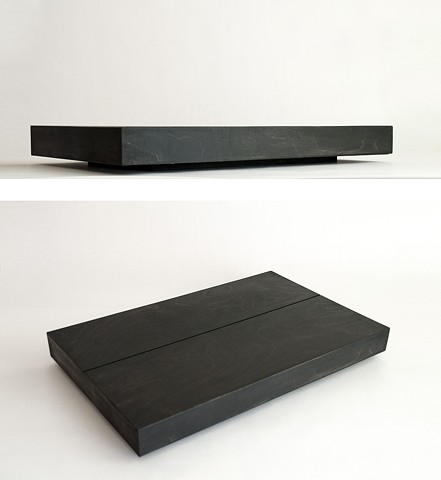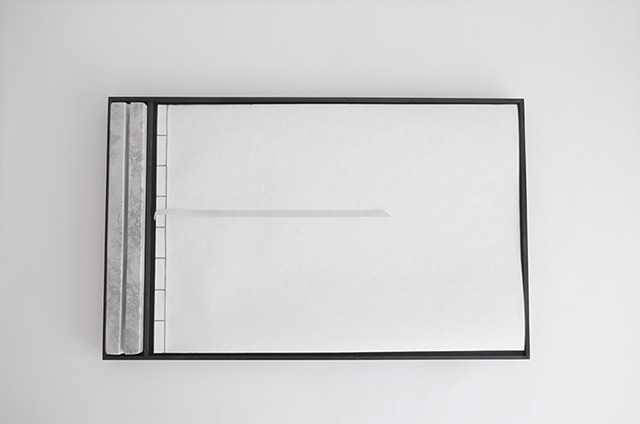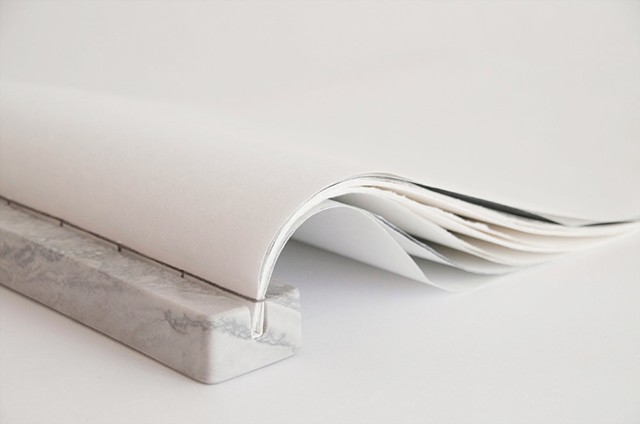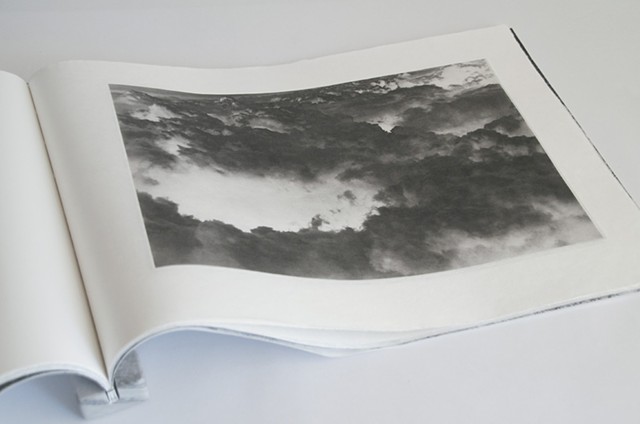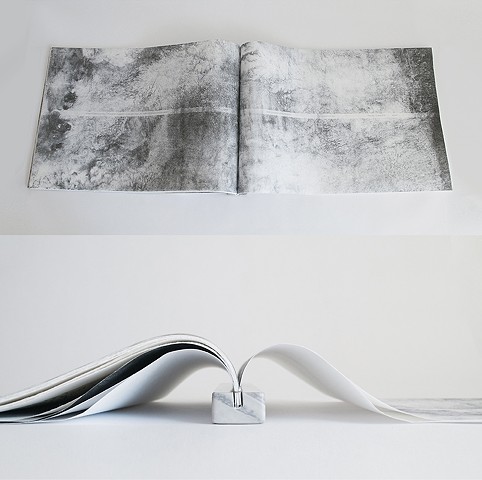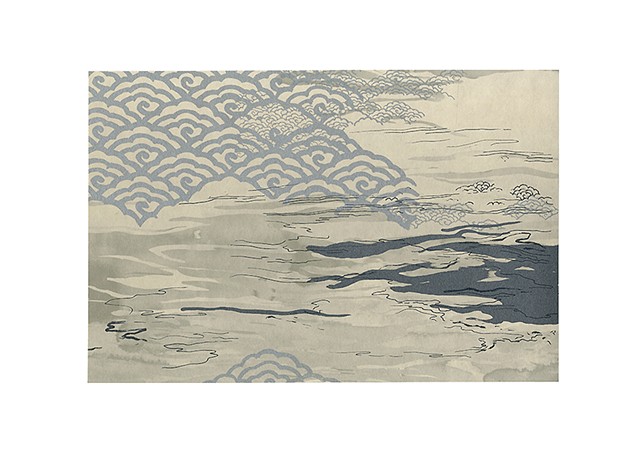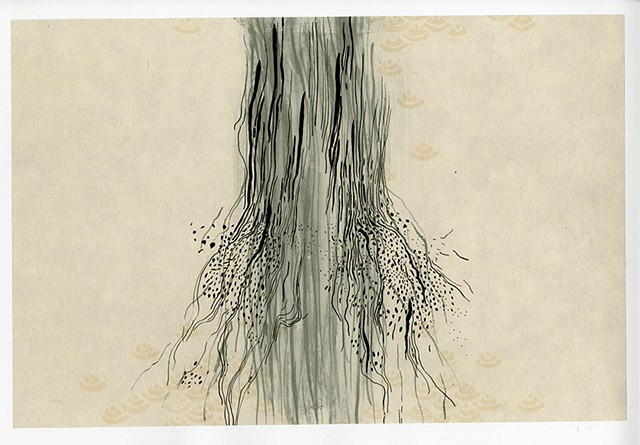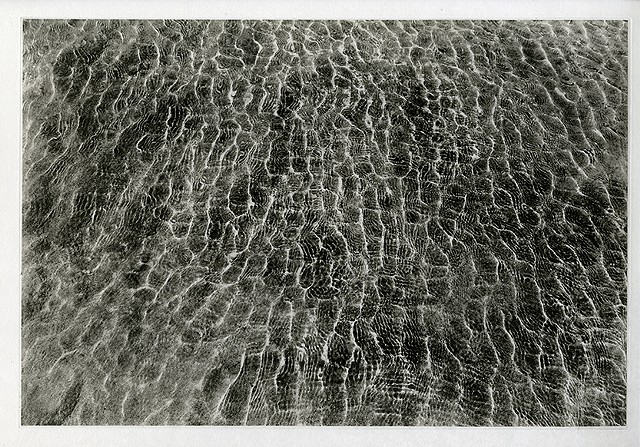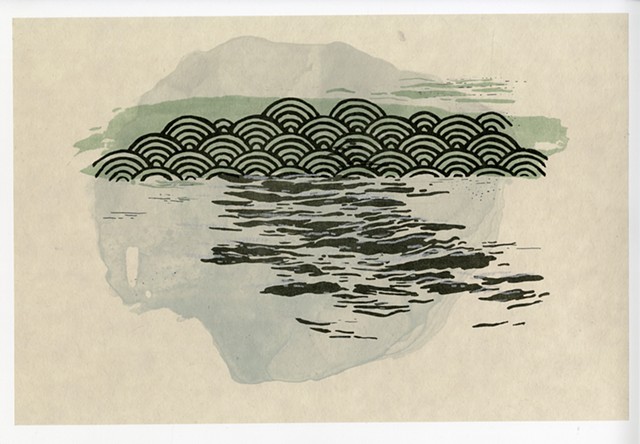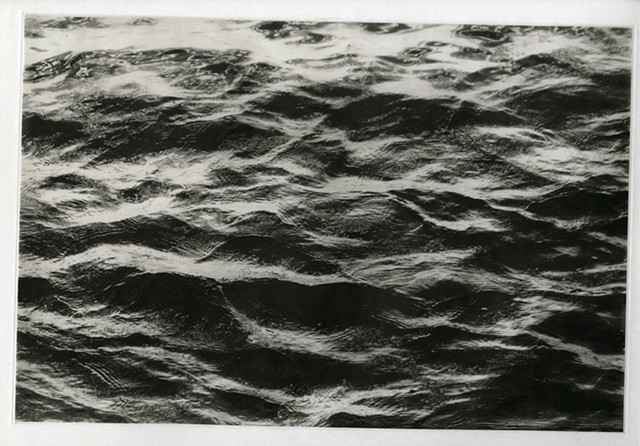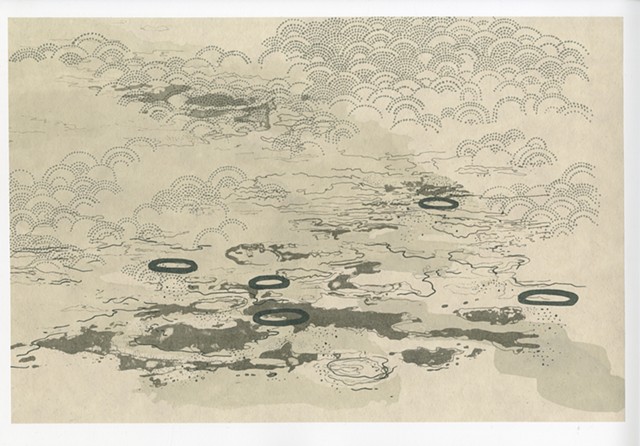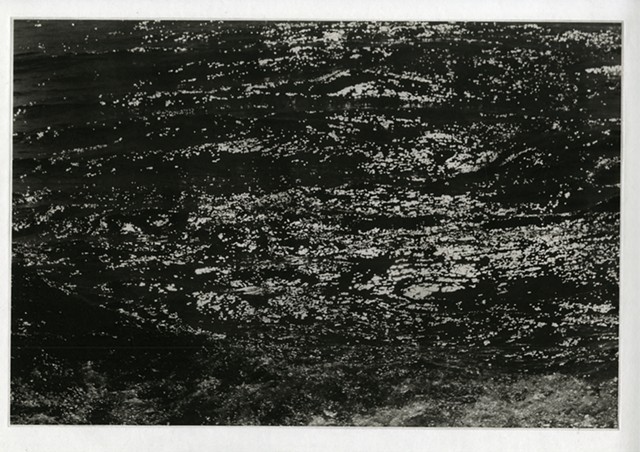Undare
A collaborative project:
Artwork by Stephanie Russ,
Book layout, construction and box design by Isabelle Fleurelien and Stephanie Russ
Undare
From the Latin to flow, undulate and/or rise in waves
This book is a reflective work that creates an intimate
and personal space to contemplate water.
Its spiritual and purifying properties as well as its
more ominous and foreboding qualities are the focus.
Water provides us with a primal connection that
reaches beyond ourselves to our collective memories
and histories. The meditative trance in its stillness,
ripples, swirling eddies or rushing water is what
Undare embodies.
Water has recently shifted to a monetary
commodity, highlighting its potential loss through
Climate change. The viewer is invited to ponder its
value and look beyond its surface challenging our
mortality as well as that of the planet.
The elements in this work represent the building
blocks that sustains us and the experience of reading
it a ceremony. The book is water, the pages its flow
and the stone what lies beneath. Its container
suggests a commemoratory vessel honouring the
memory of something that has yet to pass.
The Process
Water covers almost 71% of the earth’s surface and is our most valuable commodity.
Our initial research and explore its geographical boundaries, scale, environmental impacts, its politics as well as its social and spiritual value. Some of these investigations resulted in sampling water taken in and around Montreal and trying to identify all that is found in one drop of this water. Small samples were taken from our local environment, the Lachine canal, the St.Lawrence seaway, Montreal ,municipal tap water and even a high schools’ tap water that had been in the news for possible lead contamination. We wanted to see what, if anything
would be visible in a single drop of water.
At the Concordia University biology labs we placed these samples under a microscope. I remember the technician telling us that he didn't expect we would see anything at all. Excited by the prospect of seeing something or nothing at all we looked at our varied samples only to be completely in awe of what we saw.
Teeming with life we viewed new life forms ranging from simple bacteria to nematodes. The municipal tap water and samples from the seaway were transparent but the water from the canal offered new sights. When the microscope was in the dark field the water looked like the night sky with bacteria resembling twinkling stars.
In one drop of water we saw a new universe and our understanding of scale was altered. We were eager to explore ones personal relationship to water, how we experience it in the everyday, in summer, winter, in the streets, and in the sky. Contemplating its majestic visuals, its sometimes spiritual and cleansing nature as well as its darker more ominous and foreboding qualities became our focus.
Our need of it for our most basic physical survival was put aside to explore its more hidden value, its meditative, contemplative and deeper meaning found in its stillness, gentle ripples, swirling eddies or rushing water. Our relationship to water provides us with a connection that reaches beyond ourselves.
The Artwork
Mixed Media Prints
For the drawings I began to look at the ways water is visually represented. My research of patterns and representations of water were diverse with many coming from historical Japanese woodcuts. I was also very inspired by“Hamonshu: A Japanese Book of wave and Ripple designs” by Mori Yuzan,1903.
These patterns aimed to simplify and identify movements and qualities of water. Incorporating and inspired by some of these patterns it became a way for me to contrast the simple with the more complex. Each element in the pattern was hand drawn to reference its uniqueness.
-6 prints of lithography, ink jet, screen print, printed on Okawara and chine colle on Somerset satin. 15” x 22”
Photo Etchings
The photopolymer etchings came from photos taken over several years. Images of fast moving water, reflections in water, winter ice, the clouds, some of the vast ways we experience water in our lives.
-8 Photopolymer gravures on Tokuatsu. 15” x 22”
The book itself could not be produced without water.
Technical processes used to create the images also have a strong relationship to water. Lithography is achieved because water repels ink from the non image area. Photo polymer gravure plates are developed in water. The lithographic tusche washes are created because grease floats in the water, to be deposited on the paper or film only when the water
evaporates, leaving the grease behind. These processes became metaphors for some of the
things happening around us. Rivers drying up, floods, tsunamis and the effects of climate change.
